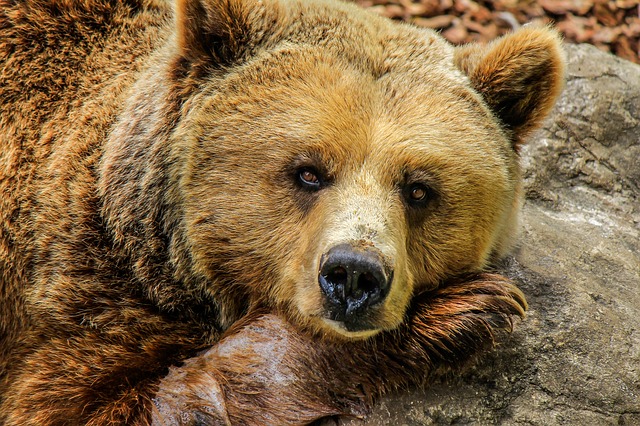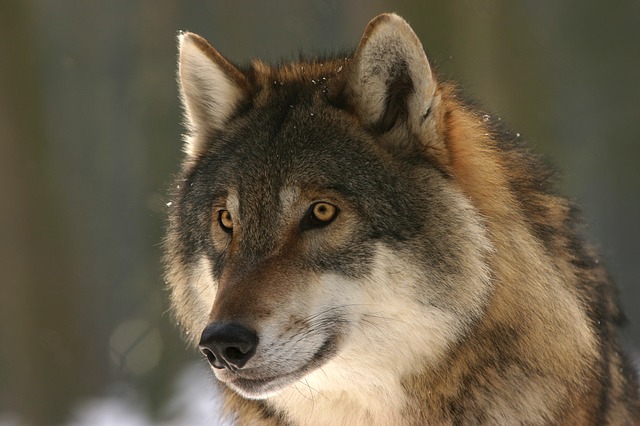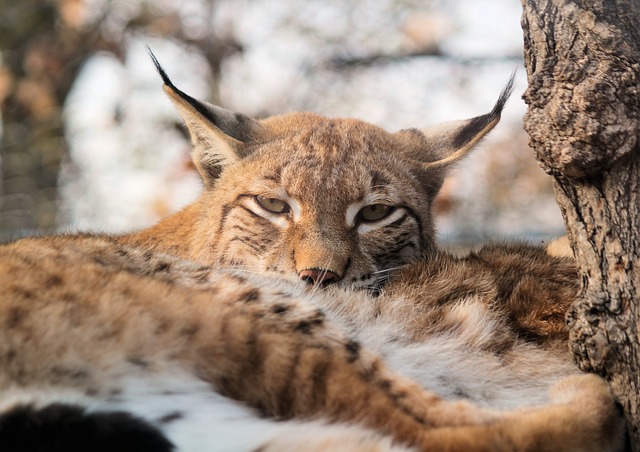BROWN BEAR (URSUS ARCTOS)
It was extinct in Hungary, but began to resettle in the 2000s. Frequently roaming individuals can also be seen in Hungary. They have already been seen in the Börzsöny, in the area of the Bükk region (especially the Tarna hills), in the Matra and in Aggtelek.
Previously, the European brown bear was present throughout northern Eurasia. The most important populations live in Russia, mostly east of the Ural, in the vast forests of Siberia and in Central Asian countries. Until the middle of the 19th century, the brown bear was found throughout Moldavia, Wallachia and Transylvania, from the Danube Delta to the Carpathians. However, the lowlands were wiped out to avoid harming agriculture. The Romanian population, excluding Russia, represents 40% of the European Union's total population, which is between 6000 and 8000 individuals. The Pyrenees, at the border of Spain and France, have small brown bear populations. In Spain, it is even found in the Cantabrian Mountains. Unfortunately, from both Spanish mountains bears slowly are going extinct. Italy also has bears, which live in the regions of Abruzzo and Trentino-Alto Adige. Larger populations are found in Albania, Slovakia, Bosnia and Herzegovina, Croatia, Slovenia, Macedonia and Bulgaria. In smaller but significant number are also found in Greece, Serbia and Montenegro. In 2005, there were an estimated 200 European brown bears in Ukraine. The bears in the countries listed above form two populations, one with more than 5,000 Carpathian stocks and the other with about 3,000 species in the Balkans. The most common perception data in Hungary comes from the Bükk region (especially the Tarna hills), although it can be said to be permanent in those parts, reproduction and the birth of offspring are not yet proven.

GREY WOLF (CANIS LUPUS)
The European gray wolf (canis lupus) in Hungary has always been present at smaller intervals.
The wolf (Canis lupus) is a species of the order Mammalia (Carnivora), including the Canidae family. The dog (Canis lupus familiaris) and dingo (Canis lupus dingo) are also subspecies, although they are also referred to as independent species. Other relative speaces are the maned wolf (Chrysocyon brachyurus) and golden jackal (Canis aureus). The wolf is a Holarctic species; one of the largest mammals in the largest area after man. He is a major top predator in the North America and Eurasia, but we can also find representatives in Central America, North Africa and South Asia. It is present in Hungary with minor interruptions. Puppy sighting in Bükk National Park has not been scientifically proven since 2000, documented continuously since 2015. On the Aggtelek karst, which belongs to the National Park of Aggtelek, has been proven to be present and reproducing since 2002. In the Zemplény mountains since 1993, wolves have been constantly detected.

EURASIAN LINX (LYNX LYNX)
The Eurasian lynx (Lynx Lynx) is Europe's largest feline. A resident of undisturbed mountains, it is rarely seen before us. Wherever it appears, we can be sure that human disturbance in the forest is minimal.
The Eurasian lynx (Lynx lynx) is a species of the mammalian (Mammalia) class of carnivores (Carnivora), including feline (Felidae). Most of Eurasian lynxes are living in the forests of northern Europe and Siberia. It occurs in Hungary in the North Central Mountains, primarily in Börzsöny, Bükk and Zemplén mountains. It is a very rare species in Hungary, and the total number of wild lynx is not expected to exceed 10. Even for professionals it is difficult to observe. With the help of wildlife cameras and in the winter, it is possible to estimate their numbers on the footprints left in the snow. The animal is between 80 and 130 centimeters in height, 60 to 75 centimeters tall, with a tail between 11 and 24.5 centimeters and weighing between 8 and 38 kilograms. The male is about 15 percent heavier than the female. The shape of the Eurasian lynx is characterized by its long leg, which makes it appear almost square in side view. Thus, its very nature suggests that the lynx is capable of rapid galloping and huge jumps. The claws on the hind legs are less strongly curved than on the front, where the claws of about 4 centimeters bend almost like a sickle. While running, the animal pulls them back into their vagina. Bad distance running. Indeed, the Eurasian lynx can hear very well and relies heavily on this sense during hunting. The lynx's ear has a 4 cm black tassel that can pinpoint the location of the sound source. The color of the tassel is strikingly different from the light back of the ear.
